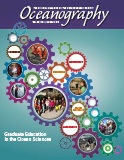First Paragraph
The National Science Foundation (NSF) Graduate Research Fellowship Program (GRFP) and the NSF Research Traineeship (NRT) program are the two primary vehicles through which NSF is addressing its fiscal year 2017 Agency Priority Goal (APG) of improving graduate student preparedness for entering the workforce. Such efforts to prepare young professionals for challenging twenty-first century career pathways are critically needed to enable all science, technology, engineering, and mathematics (STEM) disciplines to respond to the educational and workforce realities of the future. This article provides an overview of the GRFP and the NRT program and some reflections on the progress that the GRFP in particular has made since I was an NSF Fellow at Duke University 50 years ago.

